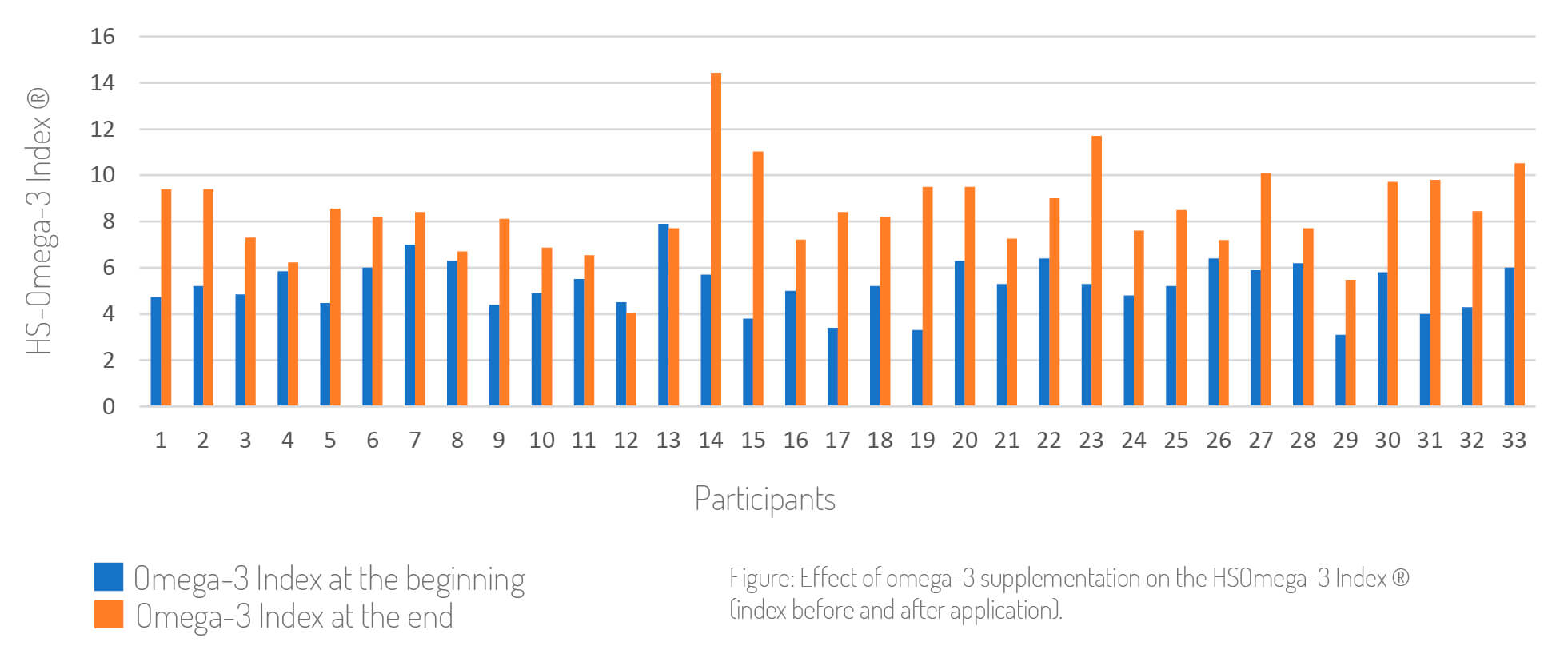NORSAN Regulation Study
INCREASE IN OMEGA-3 INDEX WITH NORSAN OMEGA-3 TOTAL
Background:
The omega-3 fatty acids EPA and DHA have anti-inflammatory properties and are important for the development and function of central organs such as the brain and eye. Furthermore, a high omega-3 index is positive for cardiovascular health. A scientific publication by Albert et al. concludes that a risk reduction of up to 90% for sudden cardiac death can be expected with a high omega-3 index (above 8%) compared to a low omega-3 index (below 4%).
The confusion is essentially due to the fact that supplementation of omega-3 does not necessarily produce the desired effect on the omega-3 index. For an induvial person the goal should not be to take just any supplement, but to have sufficient levels of omega-3 fatty acids in his/her body. The NORSAN products follows this methodical approach and can prove that our products effect the omega-3 Index in the intended way.
Methodology:
Male and female patients over 18 years of age were informed about the possibility of participation by the supervising physician. The prerequisite for participation was a previous fatty acid analysis performed by the laboratory Omegametrix GmbH in Martiensried. The fatty acid analysis is a tested and documented analysis method with high stability of the analysis values, including the HS Omega-3 Index®. Patients who had taken an omega-3 product in the last 3 months were excluded. The period of application observation was set to 4 months (tolerance period from 3.5 to 5 months). During the period, the daily intake was 8 ml of NORSAN Omega-3 Total, corresponding to a dosage of 2,000 mg of omega-3. After 4 months, a new fatty acid analysis was performed and the HS-Omega-3 Index®. Based on the fatty acid analysis performed at the beginning and at the end of the application observation, the results could be statistically evaluated. The study ran from 2018 to 2020.
Result:
On average, the Omega-3 Index® increased by 61 % from a baseline value of 5.2 % to an Omega-3 Index® of 8.4 %. In 20 of 33 participants, the HS-Omega-3-Index® was in the optimal range of ≥8 % after the end of the study. Only in 6 patients no or only a slight increase of the HS-Omega-3-Index® could be detected. The reason for this could possibly be the intake on an empty stomach or inconsistent intake during the application period.
2. William S. Harris. Omega-3 fatty acids and cardiovascular disease: A case for omega-3 index as a new risk factor; Pharmacological Research 55 (2007); 217–223.
3. Albert CM, Campos H, Stampfer MJ, Ridker PM, Manson JE, Willett WC, et al. Blood levels of long-chain n−3 fatty acids and the risk of sudden death. N Engl J Med (2002); 346: 1113–8

